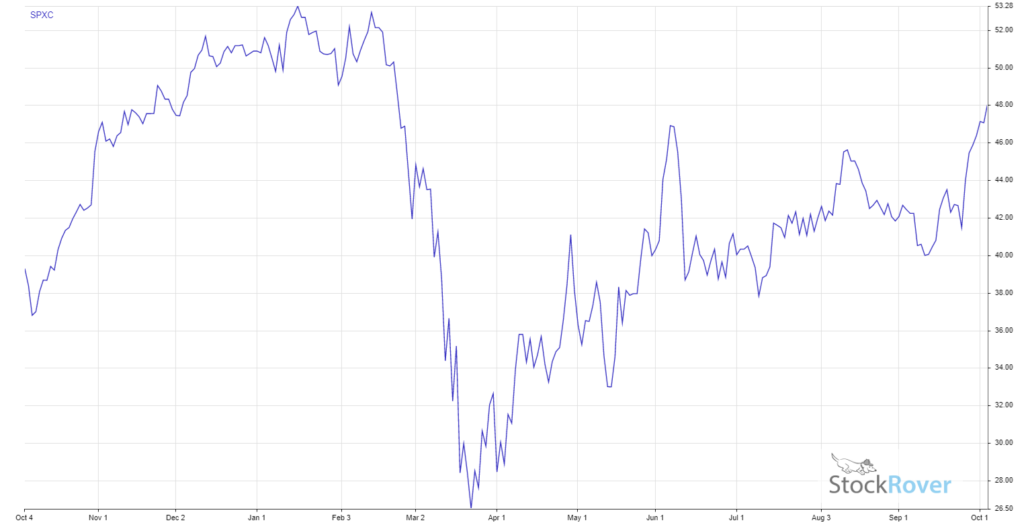One of the more intriguing current trends in U.S. investing is the growing number of strategic ETFs that have become available to investors. Index investors have typically used ETFs like SPY to capture the action of the broader market. However strategic ETFs represent or emulate an entire trading strategy, rather than just tracking an index like SPY or asset. This could be anything from a very basic strategy to trading complex products or multiple sub-strategies.

For instance, in the past, most U.S. investors seemed to prefer very straightforward ETFs that track an index like the S&P 500 using SPY or a single asset like gold bullion. However, in more recent times, we have seen assets flowing into ETFs that hedge tail risk (market crashes) or trade hedge-fund-like strategies (like merger and acquisition arbitrage).
Many of these more advanced strategies can be excellent additions to a portfolio because they often reduce risk while providing diversification. Nevertheless, it’s been an uphill battle for these funds to gain traction in the U.S. Many investors here seem to conflate complexity with risk when it clearly doesn’t have to be the case.
The past couple of years, though, have seen something of a breakthrough. More fund managers are choosing ETFs to raise money for their strategies rather than using more traditional methods (such as SMAs – separately managed accounts). In my opinion, this is an excellent development for investors, who now have access to far more interesting—and potentially more lucrative—strategies.
One type of fund strategy that could be a game-changer for the average long-term investor is the simple stock index replacement strategy, which is more refined than simply throwing money at a basic index-tracking fund. The thing that most people don’t realize is even something as broad-based as the S&P 500 can be extremely volatile. Just recently, we saw the index plunge 30% in a short period of time due to the so-called “coronacrisis.”

Why have that exposure if you can get similar upside potential with less risk? That’s where the new strategic ETFs can really help. In fact, just last week we saw the launch of a brand-new ETF that provides investors with exposure to the S&P 500 with potentially must less volatility.
This new fund comes to you from Little Harbor Advisors and Thompson Capital Management. It’s called the LHA Market State Tactical Beta ETF (MSTB). The goal of MSTB is to outperform the large-cap U.S. equity market (such as the S&P 500).
More specifically, the fund provides exposure to the S&P 500 while having a dynamic risk overlay. It’s this risk overlay that can provide consistent returns during calm market conditions and uncorrelated returns during market selloffs. MTSB uses various ETFs (or ETNs) to gain long or short exposure to the S&P 500, the VIX Index (market volatility), and treasury securities. What’s more, the fund managers may use options or other derivatives to achieve the goals mentioned above, for example using covered calls to increase returns during a calm market period.
The strategic decisions are based on proprietary quantitative models that analyze the VIX (which measures expected volatility in the S&P 500) and other market volatility metrics. These models help estimate the direction and magnitude of stock market volatility, which then determines whether more risk protection is needed or more exposure to upside potential in stocks is the way to go.
The Tactical Beta strategy has been active since 2016, traded in SMAs. While these results may differ from the ETF’s performance, they provide a guideline. For instance, in March, when the S&P 500 was down 12.5%, the Tactical Beta strategy was up 19.5%. Through August, the S&P 500 was up 9.7% for the year, while Tactical Beta was up 47.4%. In a year like 2017, with the lowest volatility on record, Tactical Beta was up 20.5% for the year, while the S&P 500 was up 21.8%.
To put that into perspective, in a year of rock-bottom volatility, Tactical Beta performed nearly as well as the S&P 500. Yet, in a year of extreme volatility, Tactical Beta is massively outperforming the index. I believe that’s exactly the sort of stock exposure investors should have in their portfolios. The best part, since MTSB is now a listed ETF, all you have to do is buy the shares yourselves. It doesn’t get any easier than that.






